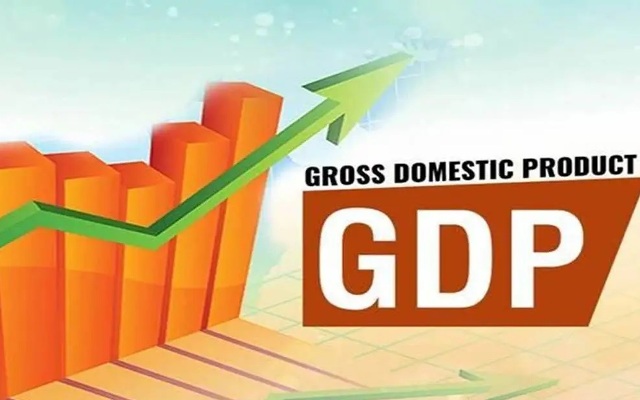As one of the fastest-growing economies, the global spotlight has shifted onto India to restore order in an increasingly disorderly global financial system.
Among the challenges, India would work towards creating an international economic order that is just, fair, inclusive and equitable for all. The focus of the Union Government will be on generating broad-based and inclusive economic growth. The fiscal policy would be grounded in reforms, resilience and readiness. This approach should not only invigorate the growth momentum but also create necessary buffers to enable the Government to effectively respond to emergent global and domestic challenges. This is stated in the Medium Term Fiscal Policy Cum Fiscal Policy Strategy Statement presented by the Union Minister for Finance and Corporate Affairs, Smt. Nirmala Sitharaman in the Parliament today.
Macro-Economic Framework Statement 2024-25 cites the first advance estimates published by the National Statistics Office, projecting India’s real and nominal GDP growth rates at 6.4 per cent and 9.7 per cent, respectively, in FY 2024-25. In the Budget for FY 2025-26, the nominal GDP is projected to grow by 10.1 per cent over the first Advance Estimates of FY 2024-25.
Inflationary pressures have moderated in FY 2024-25, with average retail inflation easing to 4.9 per cent (April-December) compared to 5.4 per cent in 2023-24, notes the Macro-Economic Framework Statement. This decline was driven by benign core (nonfood, non-fuel) inflation trends. The overall retail inflation remained within the inflation band of 4±2 per cent in FY 2024-25 (April-December). Supply-side measures from the Government have helped contain food inflation. The statement forecasts that Inflation is expected to decline in FY 2025-26. The RBI has projected inflation at 4.6 per cent and 4.0 per cent in Q1 and Q2 of FY 2025-26, respectively. Even though the outlook for commodity prices remains benign, geopolitical triggers may aggravate price pressures.
The Macro-Economic Framework Statement 2024-25 highlights the nimble fiscal policy strategy adopted by the Union Government in the post-COVID-19 pandemic years, which has generated desired fiscal policy results while providing for the country’s development needs. In
RE 2024-25, the Government has revised its Fiscal Deficit target to 4.8 per cent of GDP. In line with the commitment made in the Budget for FY 2021-22, the country is well on track to attain a fiscal deficit to GDP ratio below 4.5 per cent in FY 2025-26.
The Central Government Debt to GDP ratio is estimated to decline to 56.1 in FY 2025-26 from 57.1 in FY 2024-25. As per the path for fiscal consolidation – FY 2026-27 to FY 2030-31, sans any major macro-economic disruptive exogenous shock(s), and while keeping in mind potential growth trends and emergent development needs, the Government would endeavour to keep fiscal deficit in each year (from FY 2026-27 till FY 2030-31) such that the Central Government debt is on declining path to attain a debt to GDP level of about 50±1 per cent by 31st March 2031. Along with these, Revenue Deficit is also on a declining trend and is expected to reduce from 4.8 per cent of GDP in FY 2024-25 to 4.4 per cent of GDP in FY 2025-26.
| Revised Estimates | Budget Estimates | ||
| 2024-25 | 2025-26 | ||
| 1 | Fiscal Deficit | 4.8 | 4.4 |
| 2 | Revenue Deficit | 1.9 | 1.5 |
| 3 | Primary Deficit | 1.3 | 0.8 |
| 4 | Tax Revenue (Gross) | 11.9 | 12.0 |
| 5 | Non-Tax Revenue | 1.6 | 1.6 |
| 6 | Central Government Debt | 57.1 | 56.1 |
Table: Fiscal Indicators – Rolling Targets as a Percentage of GDP
Talking about the budget allocation for FY 2025-26 it highlights earmarking of Rs. 11.21 lakh crore (3.1 per cent of GDP) towards capital expenditure. It includes capital support to States through interest-free long-term loans with an outlay of Rs. 1.50 lakh crore. The budgeted capital outlay is almost 3.3 times the outlay in FY 2019-20.
The statement notes that to finance the fiscal deficit of FY 2025-26, the net market borrowings from dated securities are estimated at Rs. 11.54 lakh crore and the balance financing is expected to come from small savings and other sources. The gross market borrowings are estimated at Rs. 14.82 lakh crore for the same period.
Highlighting the health of the External Sector, the statement notes India’s merchandise exports grew at 1.6 per cent (YoY basis) in April-December 2024 while services exports recorded a healthy growth of 11.6 per cent in the same period. India’s current account deficit (CAD) moderated to 1.2 per cent of GDP in Q2 of FY 2024- 25 against 1.3 per cent of GDP in Q2 of FY 2023-24.
Further, it observes that Foreign Direct Investment (FDI) flows recorded a revival in FY 2024-25. While the gross FDI inflows increased from USD 42.1 billion (in April-October of FY 2023-24) to USD 48.6 billion (in the same period of FY 2024-25), net FDI inflows are pegged at USD 14.5 billion in October of the current FY. It also remarks that India’s foreign exchange reserves are estimated at USD 640.3 billion at the end of December 2024 which is sufficient to cover about 90 per cent of the country’s external debt. The import cover – a crucial indicator of external sector stability – is 11 months as of November 2024.
The document highlights Strategic priorities for FY 2025-26 which include fostering equitable and sustained growth through enhancement in employment intensity and growth potential of the economy, increased public capital spending, adoption of a ‘saturation approach’ to social welfare and development, building productive capacities in research and development for critical technologies, strengthening development capacity of the Union Government and States, and unflinching commitment to fiscal responsibility and transparency.


